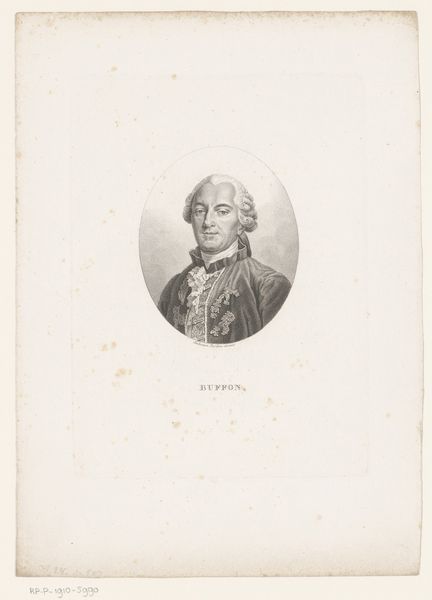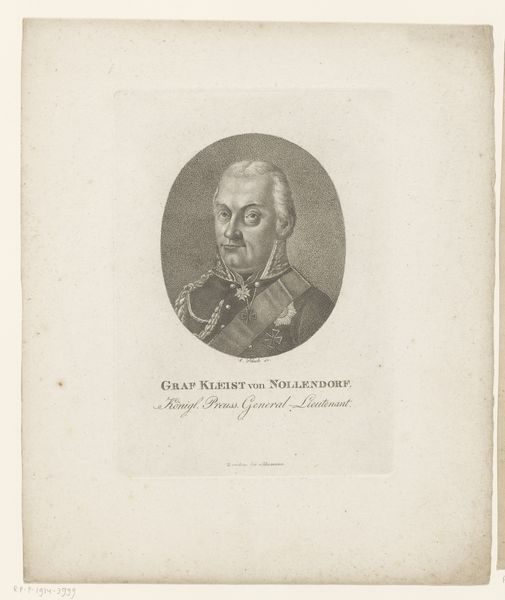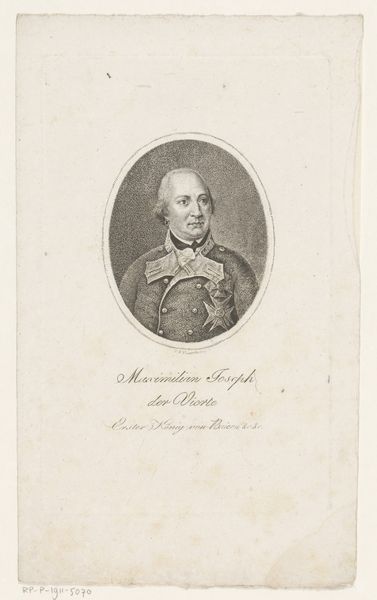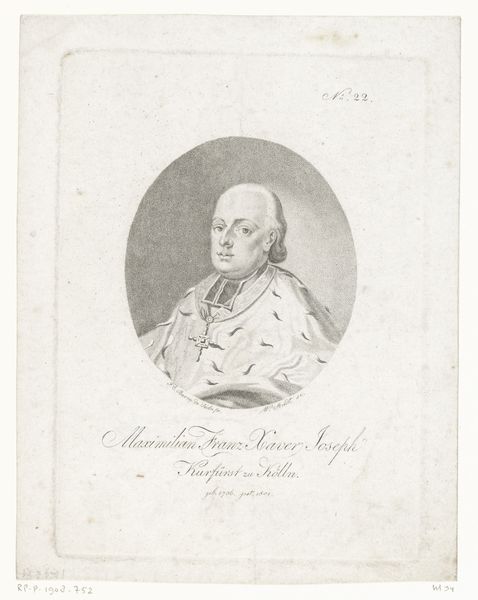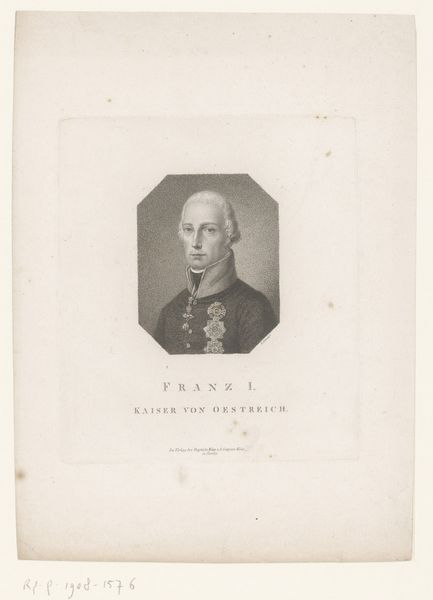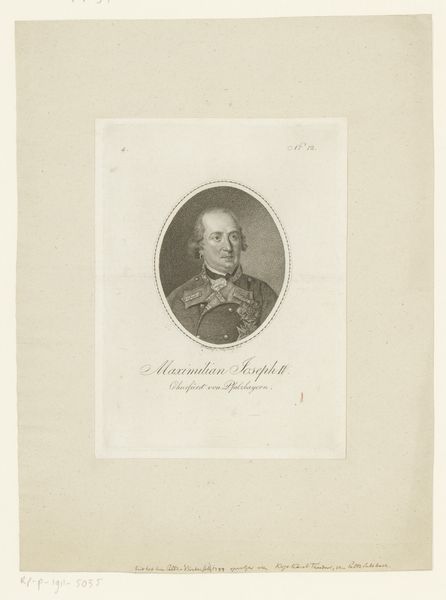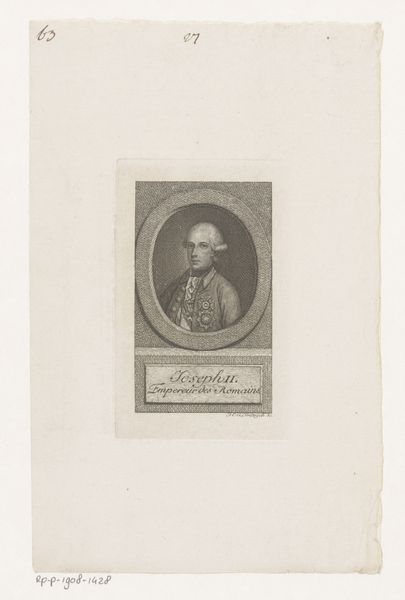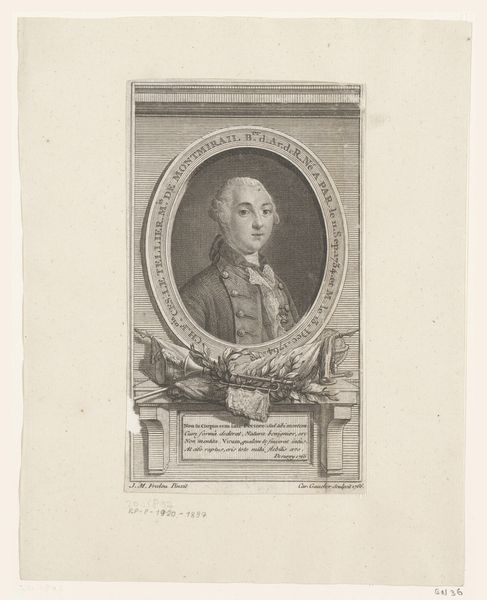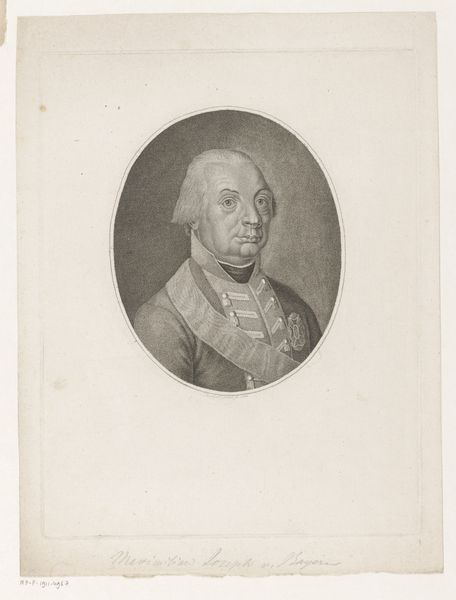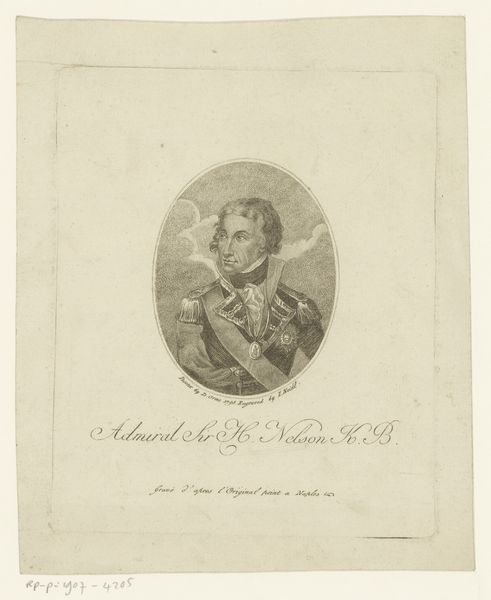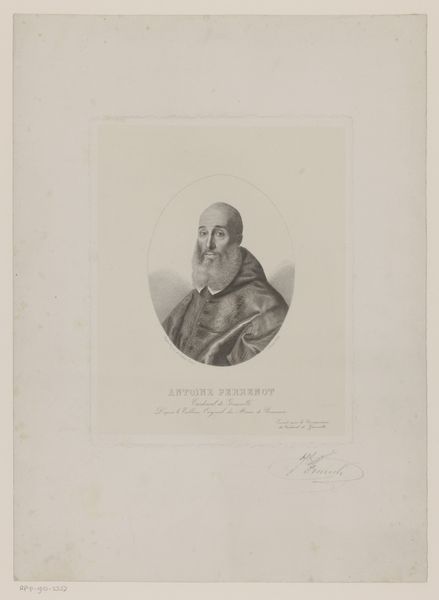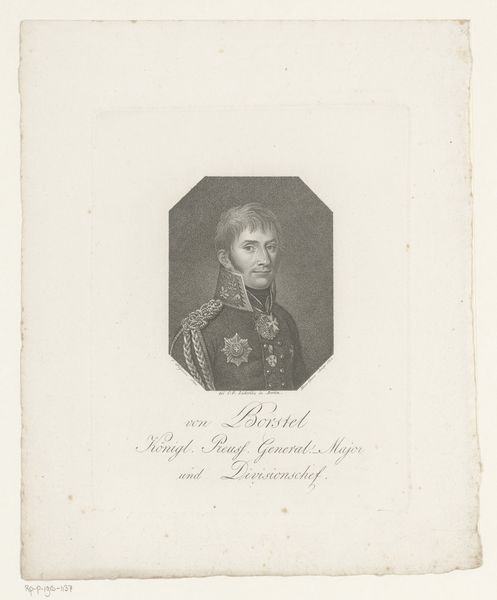
print, engraving
#
portrait
#
pencil drawn
#
neoclacissism
# print
#
pencil sketch
#
pencil drawing
#
history-painting
#
engraving
Dimensions: height 183 mm, width 125 mm
Copyright: Rijks Museum: Open Domain
Curator: This is Christian Schule’s "Graf Tauentzien," created in 1815. It's an engraving, showcasing the detailed portrait of the Prussian General. Editor: There's a stark simplicity to it, isn’t there? The oval frame isolates the figure, focusing intensely on the textures of the uniform and the stern gaze. Curator: Indeed. Schule positions the general within the broader historical narratives of power and prestige. How does his identity as a Prussian general intersect with the political landscape of post-Napoleonic Europe? The piece invites a critical examination of militarism. Editor: And materially, it's interesting how an engraving--a process of laborious, precise cutting into a metal plate—is used to depict someone whose labor, essentially, was war. Consider the act of production here: one craft mirroring another. Curator: The choice of print medium is itself a statement. Engravings like these democratized portraiture, disseminating images of authority to a wider audience, reinforcing specific ideologies about leadership. Editor: Yet, there's also a distancing effect inherent in prints. It’s mass produced but detailed—raising the question of accessibility versus the exclusive world such figures occupied. How was this print consumed, by whom, and for what purposes? Curator: I'm particularly interested in Schule’s decision to render Tauentzien with such an unflinching gaze. What message about duty and authority was Schule intending to communicate to the masses during that era? Editor: Absolutely. Plus, the uniform becomes crucial: its ornate detailing—the medals, the braiding—all indicators of rank, service, and probably of resources invested. These embellishments highlight a visual language around power and status through materialized things. Curator: Looking closely, one might find a dialogue between the idealized portrayal of the general and the very real, violent impact of the military on society, particularly concerning identity formation for oppressed communities. Editor: For me, examining the materiality forces me to consider labor practices. Where was the metal sourced for the printing plate? Who were the artisans involved in its production? What sort of workshops or manufacturing existed to fulfill these types of aesthetic tastes? Curator: Precisely. It encourages us to challenge simplistic notions of heroism by contextualizing figures like Tauentzien within wider, intersectional socio-political frames. Editor: This piece serves as a powerful reminder to consider art not just for aesthetics, but also its embedded socio-economic context. Curator: Agreed. It is an entry point to complex discussions around history, identity, and power.
Comments
No comments
Be the first to comment and join the conversation on the ultimate creative platform.
